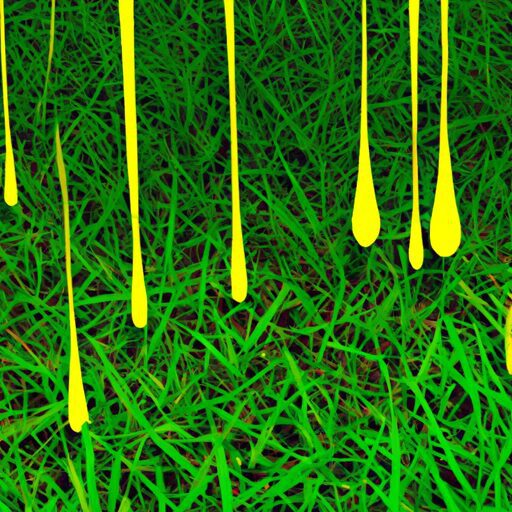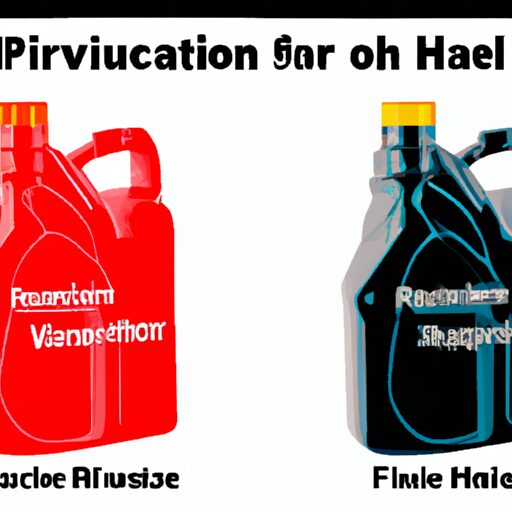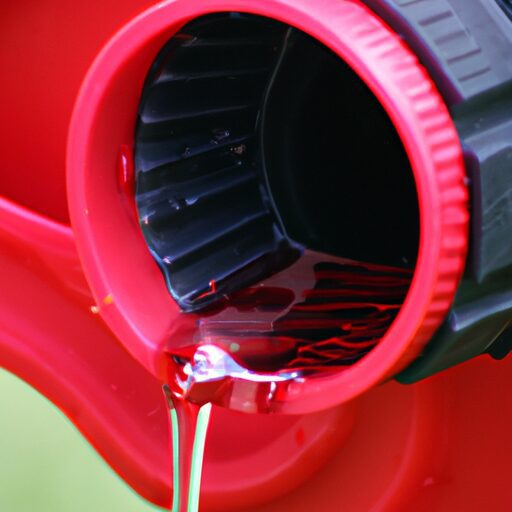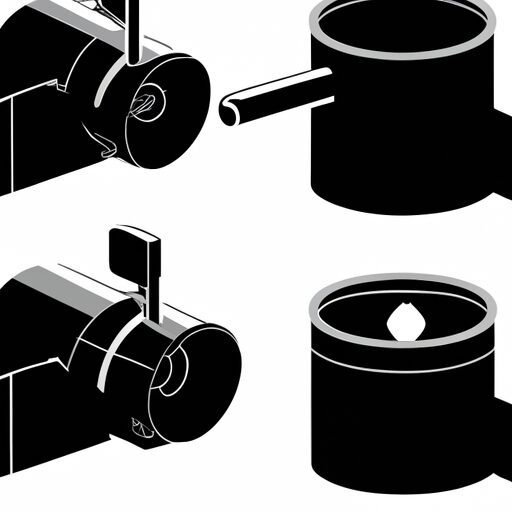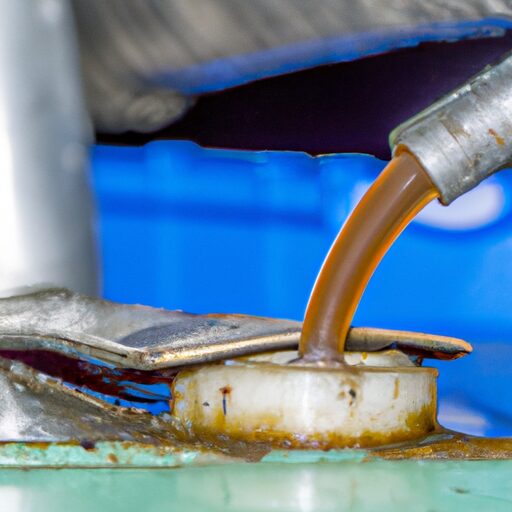Does Hydraulic Fluid Kill Grass
Hydraulic fluid is widely used in various industries for its ability to transmit power efficiently. However, concerns have been raised regarding the potential effects of hydraulic fluid on grass, particularly in residential areas where lawns are a prominent feature. This article aims to investigate the question: "Does hydraulic fluid kill grass?" By examining the composition of hydraulic fluid and considering factors that determine grass resilience, we can gain insights into the potential risks and damages associated with hydraulic fluid exposure. Additionally, this article will explore preventive measures that homeowners can take to protect their lawns from possible harm caused by hydraulic fluid. Remedies for hydraulic fluid damage will also be discussed, along with the importance of seeking professional advice for effective lawn care practices. The objective style employed in this article ensures an impartial examination of the topic while providing valuable information for readers interested in understanding the impact of hydraulic fluids on grass health.
Understanding Hydraulic Fluid Composition
Hydraulic fluid composition is a critical factor to consider in order to understand its potential effects on the environment, including grass. Hydraulic fluids are used in various industrial applications to transfer power and lubricate hydraulic systems. These fluids are typically made up of a base oil and additives, which enhance their performance and stability under different operating conditions.
The base oil used in hydraulic fluids can be mineral-based or synthetic, depending on the specific requirements of the system. Mineral-based oils are derived from crude oil and contain hydrocarbon chains of varying lengths. Synthetic oils, on the other hand, are chemically engineered to have specific properties such as high temperature stability and low volatility.
In addition to the base oil, hydraulic fluids also contain various additives. These additives include anti-wear agents, rust inhibitors, viscosity modifiers, and anti-foaming agents. The specific chemicals used as additives can vary depending on the desired characteristics of the fluid.
When it comes to environmental impact, hydraulic fluid chemicals can potentially pose risks if they are released into the environment. Certain chemicals present in hydraulic fluid additives may have toxic effects on plants and aquatic life if they contaminate soil or water bodies.
Understanding hydraulic fluid composition is crucial for assessing potential risks to grass from hydraulic fluid exposure. By examining the chemical makeup of these fluids, we can better understand how they may interact with grass and determine appropriate measures for prevention or remediation in case of accidental spills or leaks.
Potential Risks to Grass from Hydraulic Fluid
The impact of hydraulic fluid on the health and vitality of grass warrants consideration, as it raises questions about potential risks to the surrounding environment. Hydraulic fluid is composed of various chemical compounds, including additives that enhance its performance. While these additives can improve the functionality of hydraulic systems, they also have the potential to harm grass if spilled or leaked onto lawns or other green spaces.
One potential solution to mitigate the environmental impact of hydraulic fluid spills is prompt and effective cleanup. Swift action can prevent prolonged exposure and limit damage to grass. Absorbent materials such as kitty litter or specialized spill kits designed for oil-based substances can be used to contain and remove spilled hydraulic fluid.
Additionally, proper maintenance and inspection of hydraulic systems can help prevent leaks and reduce the chances of accidents that could harm nearby vegetation. Regular checks for worn-out seals, damaged hoses, or loose connections can identify potential issues before they escalate into significant problems.
Understanding how factors such as soil type, climate conditions, and grass species influence resilience will further aid in managing any negative effects from hydraulic fluid spills on grass areas. By considering these aspects alongside potential solutions for addressing environmental impacts, a comprehensive approach can be adopted to protect both grass health and overall ecosystem well-being without causing undue harm or disruption.
Factors That Determine Grass Resilience
Factors such as soil composition, weather conditions, and grass species play a crucial role in determining the resilience of grass. Grass recovery after exposure to hydraulic fluid can vary depending on these factors. The composition of the soil affects its ability to absorb and filter contaminants, including hydraulic fluid. Sandy soils tend to have lower organic matter content and may allow for faster runoff and less filtration, potentially increasing the environmental impact of hydraulic fluid on grass. In contrast, clay soils with higher organic matter content may have better filtration capabilities, reducing the potential damage caused by hydraulic fluid.
Weather conditions also influence grass recovery. Heavy rain can wash away hydraulic fluid from the surface of the grass blades and dilute it in the soil. This dilution effect can help mitigate damage to grass by reducing direct contact with concentrated amounts of hydraulic fluid.
Additionally, different species of grass exhibit varying degrees of resilience to environmental stressors, including exposure to hydraulic fluid. Some grass species are more tolerant and capable of recovering from such damage than others.
Understanding these factors is essential for assessing the potential impact that hydraulic fluid may have on grass. In the subsequent section about ‘signs of hydraulic fluid damage on grass,’ we will explore how to identify whether your lawn has been affected without causing further harm or spreading contamination.
Signs of Hydraulic Fluid Damage on Grass
Signs of hydraulic fluid damage on grass can be observed through yellowing or browning of grass blades, as well as stunted growth or wilting. Yellowing or browning of grass blades indicates a lack of chlorophyll production and can be caused by the toxic chemicals present in hydraulic fluid. Stunted growth or wilting occurs when the roots are unable to absorb nutrients and water due to the damage caused by hydraulic fluid.
Yellowing or Browning of Grass Blades
Yellowing or browning of grass blades, colloquially known as ‘lawn tan,’ can potentially occur due to the effects of hydraulic fluid. When hydraulic fluid comes into contact with grass blades, it can disrupt their normal metabolic processes and cause discoloration. The yellowing or browning may be a result of the fluid’s chemical composition, which could contain substances that are harmful to plants. Additionally, hydraulic fluid may create a barrier on the surface of the grass blades, preventing them from receiving adequate sunlight and nutrients. This lack of essential resources can lead to cellular damage and subsequent discoloration. It is important to note that not all grass species respond in the same way to hydraulic fluid exposure, with some being more susceptible than others. Understanding these effects can help identify potential causes for yellowing or browning in affected areas and inform appropriate remedial measures. Transitioning into the subsequent section about ‘stunted growth or wilting,’ it is crucial to explore other signs indicative of hydraulic fluid damage on grass.
Stunted Growth or Wilting
Hampered growth and withering of grass blades may be observed when they are exposed to certain environmental conditions that impede their normal physiological processes. Stunted growth is a common symptom of grass that is not receiving adequate nutrients. When the grass does not have access to essential macronutrients such as nitrogen, phosphorus, and potassium, its growth becomes stunted, leading to shorter blades and an overall lack of vigor. This nutrient deficiency can occur due to various reasons, including poor soil quality or improper fertilization practices. In addition to nutrient deficiencies, wilting can also occur when there is insufficient water supply to the grass roots. To prevent these issues and protect your lawn from stunted growth and wilting, it is crucial to implement appropriate preventive measures.
Transitioning into the subsequent section about preventive measures: By implementing certain strategies, you can ensure optimal conditions for your lawn’s health and vitality.
Preventive Measures to Protect Your Lawn
This discussion will focus on three key points for preventive measures to protect your lawn: proper equipment maintenance, spill prevention, and cleanup. Proper equipment maintenance is essential in preventing accidents and leaks that can damage the grass. Spill prevention strategies help minimize the risk of hydraulic fluid spills, which can harm the lawn. Additionally, prompt and effective cleanup methods are crucial in minimizing any potential damage caused by accidental spills or leaks.
Proper Equipment Maintenance
Regular maintenance of equipment is crucial for preventing potential damage, thus ensuring the longevity of hydraulic systems without detrimental effects on surrounding vegetation. To maintain your equipment properly and avoid any contamination issues that may harm your lawn, consider the following equipment maintenance tips:
-
Regularly inspect hydraulic hoses and fittings for leaks or wear. Replace damaged components promptly to prevent fluid leakage onto the grass.
-
Keep hydraulic fluid clean and free from contaminants by using proper filtration systems. Common hydraulic fluid contaminants include water, dirt, and metal particles.
-
Perform regular fluid analysis to monitor the condition of hydraulic oil and detect any abnormalities that could lead to potential problems.
By implementing these maintenance practices, you can minimize the risk of hydraulic fluid spills or leaks that could harm your grass. Moving forward into spill prevention and cleanup, it is essential to be prepared for any unforeseen accidents or mishaps involving hydraulic fluids.
Spill Prevention and Cleanup
Efficient spill prevention and effective cleanup procedures are essential in ensuring minimal environmental impact and maintaining the integrity of hydraulic systems. Spill prevention techniques include regular maintenance of equipment, such as inspecting hoses and fittings for leaks or wear, keeping hydraulic fluid levels within the recommended range, and using proper storage containers to minimize the risk of spills. Additionally, establishing clear protocols for handling spills and training personnel on proper cleanup procedures can help mitigate any potential negative effects on the environment. Promptly containing and removing spilled hydraulic fluid is crucial to prevent it from seeping into soil or water sources, where it can harm plant life and wildlife. Implementing these spill prevention measures minimizes the likelihood of environmental contamination while preserving the functionality of hydraulic systems. Transitioning into remedies for hydraulic fluid damage, there are steps one can take to address any negative impacts caused by fluid spills without causing further harm.
Remedies for Hydraulic Fluid Damage
One potential solution to mitigate the damage caused by hydraulic fluid on grass is through the implementation of remedial measures, akin to a gentle rain shower that nourishes and rejuvenates the affected area. Grass recovery and soil revitalization are key considerations when addressing hydraulic fluid damage.
To promote grass recovery, it is crucial to remove any contaminated topsoil promptly. This can be achieved by carefully excavating the affected area and disposing of the contaminated soil properly. Once this step is completed, replacing the removed soil with fresh topsoil can aid in rejuvenating the grass. Additionally, applying an appropriate fertilizer can provide essential nutrients that facilitate grass regrowth.
Soil revitalization plays a vital role in repairing hydraulic fluid damage. Using organic compost or amendments can help improve soil structure and enhance its ability to retain moisture. This promotes root growth and supports overall plant health. Regular watering should be implemented to maintain adequate moisture levels in the soil, ensuring optimal conditions for grass recovery.
In conclusion, implementing remedial measures such as prompt removal of contaminated topsoil, replacing it with fresh topsoil, applying fertilizer, using organic compost or amendments for soil revitalization, and maintaining proper moisture levels are effective strategies for mitigating hydraulic fluid damage on grass. Seeking professional advice for lawn care further enhances successful rehabilitation efforts without compromising environmental sustainability or long-term lawn health.
Seeking Professional Advice for Lawn Care
Professional advice for lawn care is essential in order to optimize the rehabilitation efforts and ensure the long-term health and sustainability of the grass. Seeking professional guidance can provide homeowners with expert knowledge and techniques that are specific to their unique lawn maintenance needs. Here are three key reasons why seeking professional advice for lawn care is beneficial:
-
Expertise: Professionals in the field of lawn care have extensive knowledge and experience in dealing with various types of grass, soil conditions, and climate factors. They can accurately assess the damage caused by hydraulic fluid or any other issues and provide tailored solutions.
-
Customized Solutions: Lawn care professionals can develop personalized strategies based on individual lawn conditions, such as soil type, grass species, sun exposure, and water availability. This ensures that the rehabilitation efforts address specific problems effectively.
-
Time Efficiency: Professionals have access to specialized equipment and resources that enable them to efficiently carry out maintenance tasks. This saves homeowners time and effort while achieving desired results.
By seeking professional advice for lawn maintenance, individuals can benefit from expert recommendations tailored to their specific needs. This not only helps in rehabilitating a yard damaged by hydraulic fluid but also promotes the overall health and longevity of the grass.
Frequently Asked Questions
Can hydraulic fluid kill other plants besides grass?
Hydraulic fluid can have detrimental effects on flower beds and vegetable gardens. Its impact can lead to damage and potentially kill plants in these areas. It is important to take precautions to prevent contamination and minimize the negative consequences of hydraulic fluid exposure.
Is hydraulic fluid toxic to humans?
Hydraulic fluid can pose health risks to humans if proper safety precautions are not followed. Exposure can result in skin irritation, respiratory issues, and eye damage. It is important to handle hydraulic fluid with care and use protective measures.
How long does it take for hydraulic fluid to damage grass?
The effects of hydraulic fluid on soil and the environmental impact it poses have been extensively studied. However, there is a lack of specific data regarding the duration it takes for hydraulic fluid to damage grass.
Can hydraulic fluid damage be reversed?
Hydraulic fluid damage can be reversed through appropriate prevention techniques. Implementing measures such as prompt cleanup, soil remediation, and reseeding can help restore the affected area.
Are there any natural alternatives to hydraulic fluid that won’t harm grass?
Are there natural lubricants that are eco-friendly substitutes for hydraulic fluid, without harming grass? Explore alternatives like vegetable oils, plant-based lubricants, and biodegradable options to minimize environmental impact while maintaining equipment performance.
Conclusion
Hydraulic fluid composition varies, but it typically contains petroleum-based oils and additives. While some hydraulic fluids may have minimal impact on grass, others can cause damage due to their chemical makeup. Factors such as the type of hydraulic fluid, concentration, and duration of exposure determine the resilience of grass. Signs of hydraulic fluid damage include discoloration, wilting, or death of grass blades. Preventive measures like proper equipment maintenance and prompt cleanup can help protect your lawn. In cases where damage has occurred, seeking professional advice for lawn care is recommended.
For example, a study conducted by researchers at a renowned agricultural university analyzed the effects of different types of hydraulic fluids on common turfgrass species. The study found that a particular brand of hydraulic fluid containing high levels of toxic chemicals caused severe damage to the grass, resulting in extensive yellowing and stunted growth. This case highlights the importance of understanding hydraulic fluid composition and taking necessary precautions to avoid potential harm to your lawn.

